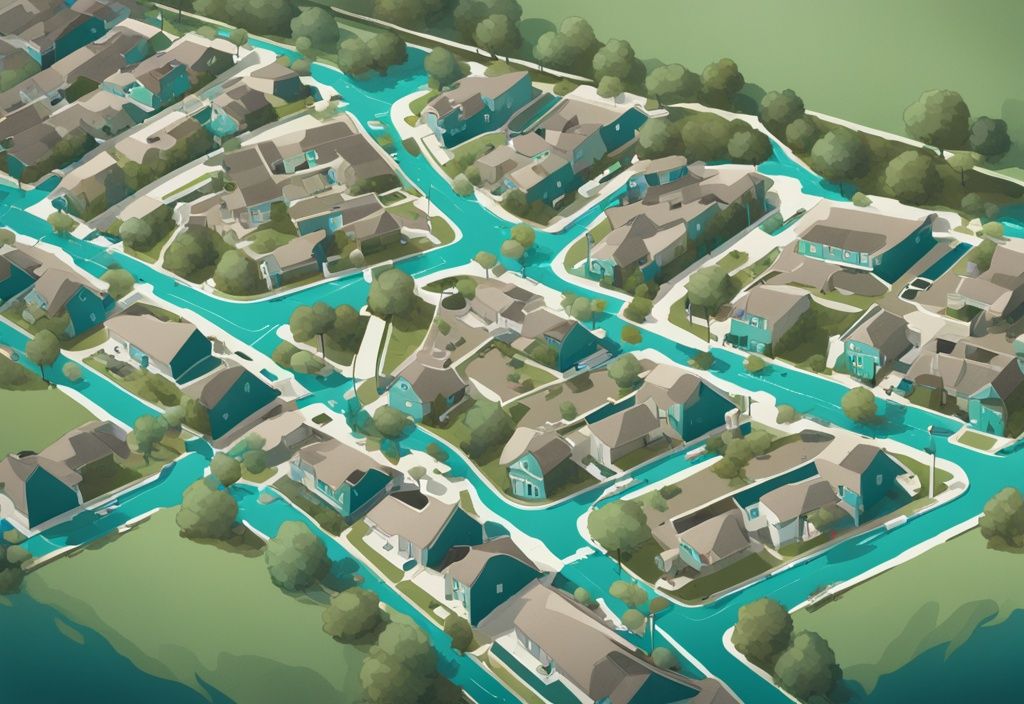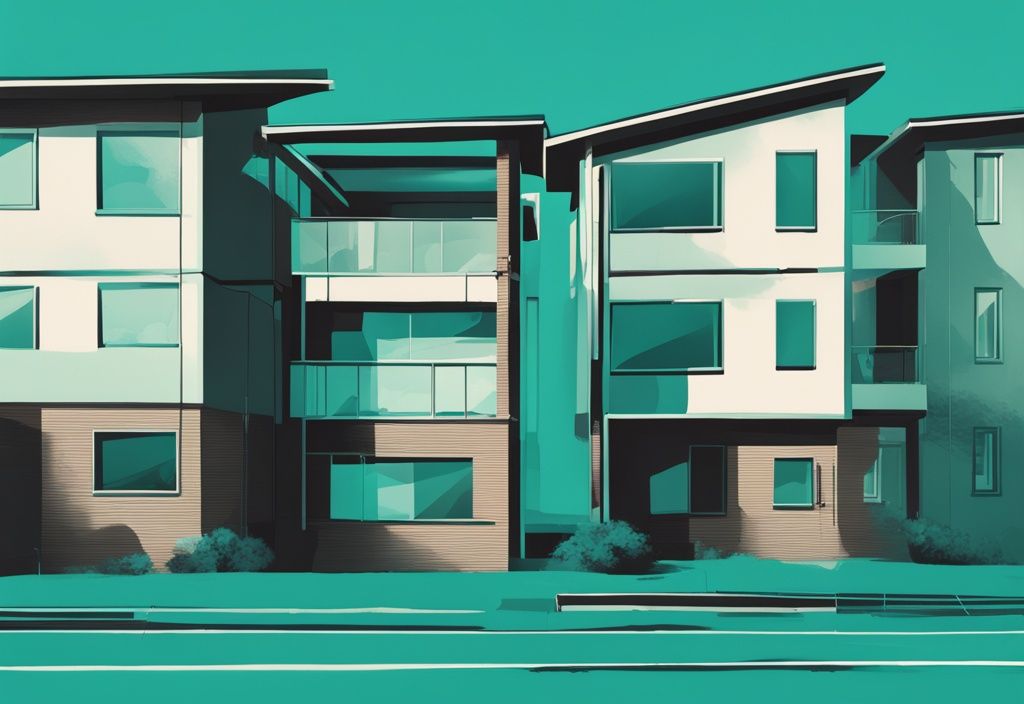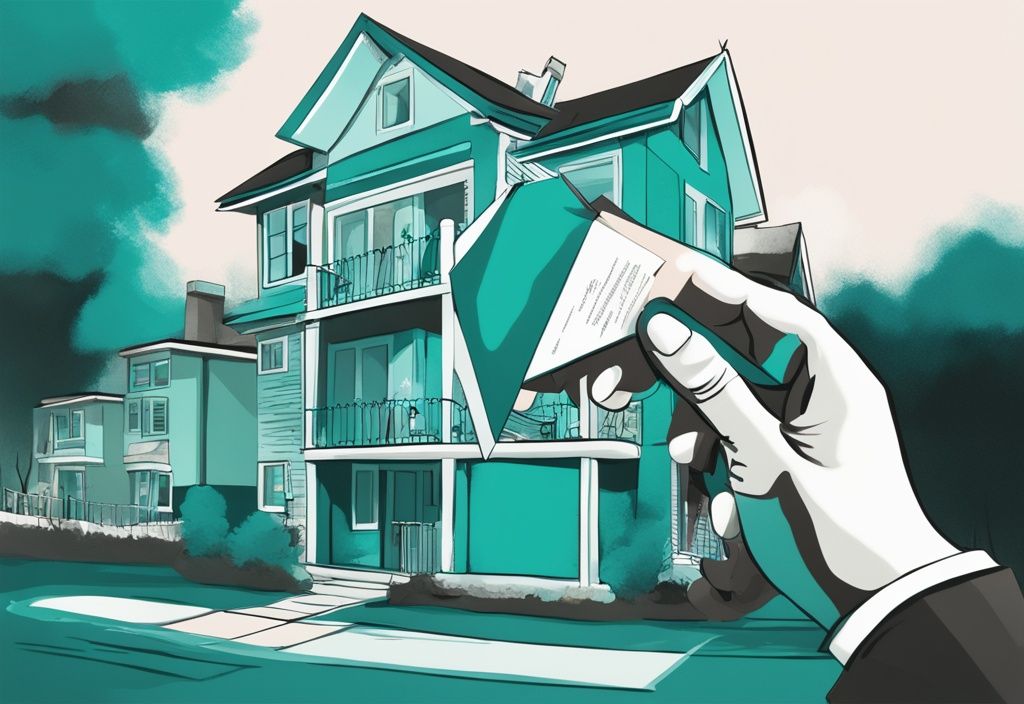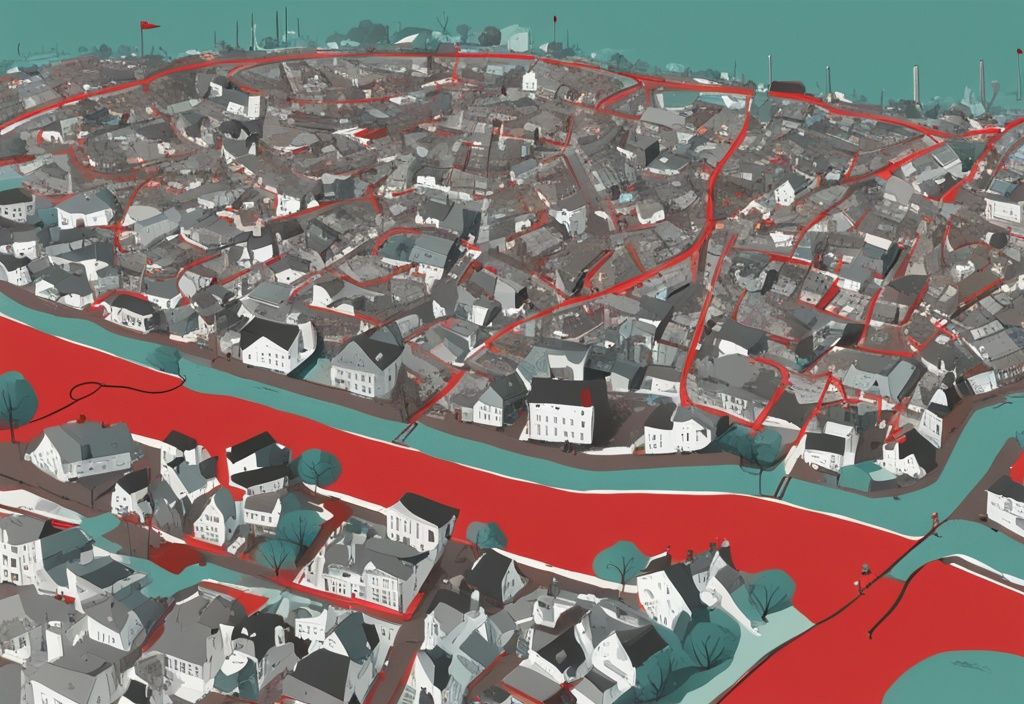Have you ever wondered ‘What is a subdivision in real estate?’ You’re not alone. This concept might seem complicated, but like a jigsaw puzzle, once everything falls into place, the image becomes clear. Breaking down large properties into smaller lots, subdivisions are key contributors to our landscapes. But why should they matter to you?
Whether you’re an investor or a homebuyer, understanding subdivisions is like knowing the secret ingredients to a winning recipe—it’s your path to making informed real estate decisions. But fear not, in this guide, we’re dishing out everything you need to know. From the basics to the regulatory fine prints, we’ll walk you through the process, benefits, and challenges of creating a subdivision.
So, buckle up, folks! We’re about to embark on a journey that will transform how you view subdivisions, ultimately empowering you to leverage this fundamental concept in your future real estate adventures!
Understanding Subdivisions: Definition and Basics
A subdivision in real estate involves transforming a single parcel of land into multiple, smaller lots. This process is meticulously documented, with each new lot being recorded as an individual property record. Governed by local authorities, subdivisions must adhere to a range of regulations that cover land use, road access, and utility provisions. This legal and regulatory framework ensures that subdivisions are systematically planned and managed.
The primary goal of subdividing land is to enhance its income potential. By dividing a large parcel into smaller, more manageable lots, property developers can make the land more profitable. Subdivisions can be classified into three main categories: residential, commercial, and industrial.
Residential subdivisions often feature homes built by the same company, resulting in similar architectural styles and layouts. This uniformity simplifies the building process and offers potential homeowners consistency in quality and design. Subdivisions also provide developers with a structured framework, making it easier to navigate regulations and optimize the property’s potential.
The Historical Context of Subdivisions
The concept of modern subdivisions can be traced back to the post-World War II era. During this period, the surge in demand for private homes was met with an innovative solution by William Levitt. Levitt is often credited with pioneering the idea of modern subdivisions, where entire communities of affordable, uniform homes were constructed quickly and efficiently.
Initially, subdivisions featured uniform homes, reflecting the post-war need for rapid and economical construction. However, contemporary subdivisions have evolved significantly. Today, they offer a diverse array of styles, amenities, and designs to cater to various tastes and needs.
The subdivision creation process often utilizes the Lot and Block survey system, a method that became widespread in the 19th century and continues to be a popular choice for delineating property boundaries.
Subdivisions play a crucial role in urban development by creating distinct neighborhoods. These neighborhoods often feature specific characteristics that cater to different socioeconomic groups, contributing to the broader tapestry of urban living. By establishing clear and organized parcels of land, subdivisions not only foster community development but also facilitate structured growth and connectivity within urban areas.
Creating a Subdivision: A Step-by-Step Guide
The process of creating a subdivision typically involves multiple steps, including planning, zoning, obtaining necessary permits, constructing infrastructure such as roads and utilities, and selling the finished lots. Understanding what is a subdivision in real estate is crucial for anyone looking to maximize their property’s potential.
Feasibility Assessment: The First Step
The first step in creating a subdivision is conducting a feasibility assessment to determine whether the land is suitable for subdivision and if there is adequate market demand. This involves various studies on terrain, market trends, environmental impact, and financial viability. A cost analysis is often performed by professionals to determine whether the project is financially viable, ensuring that developers have a clear understanding of potential expenses and returns.
Applying for Zone Approval
Obtaining zone approval is a critical step in the subdivision process, requiring a zoning permit that outlines land use and development criteria. Developers must submit applications to local authority planning departments. Zoning laws categorize land into types such as residential, commercial, industrial, or mixed-use, directly affecting what can be developed. Understanding these regulations can streamline the process and prevent future complications.
Land Survey and Mapping: Key Elements
A land survey conducted by a licensed surveyor is essential for creating a detailed map of the property, highlighting boundaries and subdivision details. This survey provides a legal description of each lot within the subdivision using the lot and block system. Proper mapping is crucial for legal purposes and ensures that all new plots are accurately recorded.
Getting Subdivision Approval and Its Legal Recording
Securing approval from city authorities ensures that the subdivision complies with local planning and zoning regulations. Once approved, the subdivision is legally recorded, officially recognizing it in land records. This process may involve public hearings and must meet environmental and planning regulations to proceed smoothly.
Construction Planning and Land Preparation
This stage involves detailed planning for necessary infrastructure such as roads, utilities, and drainage systems. Land preparation may include grading to ensure proper drainage, construction of roadways, and installation of utilities like water and electricity. Effective infrastructure development ensures that the newly created lots are ready for future construction and habitation, making the property attractive to potential buyers.
By understanding and meticulously planning each step involved in creating a subdivision, developers can successfully navigate the complexities of what is a subdivision in real estate, ensuring a profitable and organized development process.
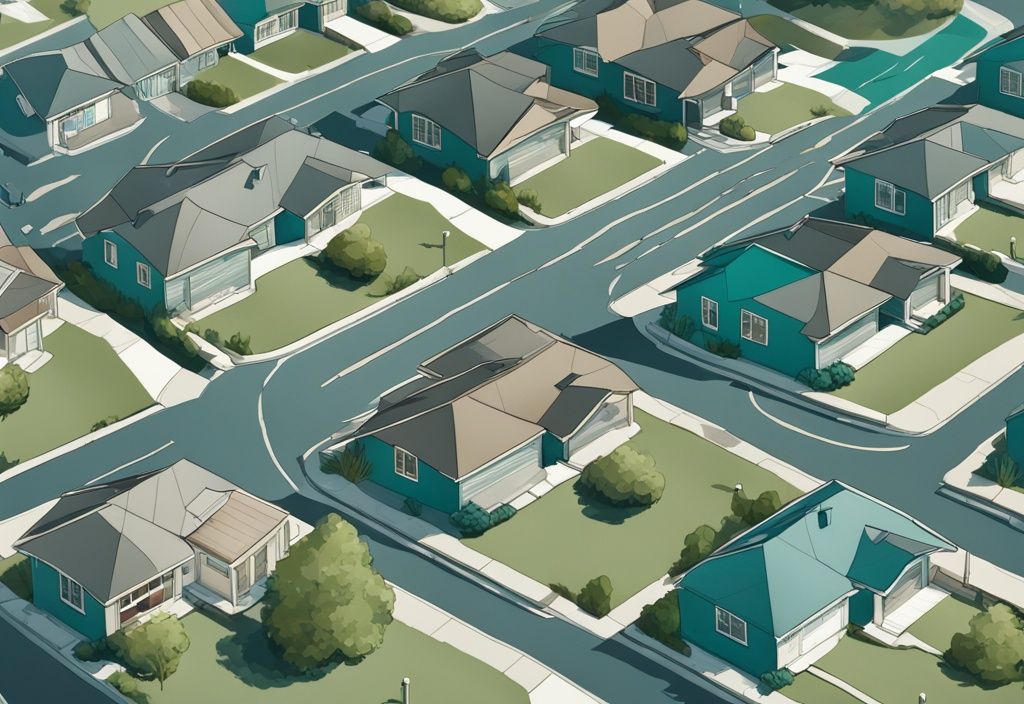
Types of Subdivisions: An Overview
When it comes to real estate, understanding the different types of subdivisions can help you make informed decisions, whether you’re buying, selling, or investing. Subdivisions are essentially parcels of land divided into smaller lots with specific uses, and they fall into several categories, primarily residential, commercial, and industrial. Let’s dive into each type and explore what makes them unique.
Residential Subdivisions
Residential subdivisions are all about creating inviting and functional living spaces. Developers design these parcels with housing in mind, often including single-family homes, townhouses, apartments, and condos. What makes these subdivisions particularly attractive are the amenities that come with them—think parks, pools, and playgrounds. These features not only enhance the living experience but also add value to the properties.
Most residential subdivisions are the brainchild of one or a group of developers, leading to a harmonious architectural style and a uniform community feel. Imagine walking through a neighborhood where everything feels cohesive and planned—a sense of unity that can be very appealing. Beyond just homes, these areas might incorporate small retail spaces or community centers, making it a breeze to grab a coffee or host local events. It’s all about fostering a convenient and well-rounded lifestyle. Understanding the dynamics of these spaces can greatly impact [what sales volume in real estate] means for potential investors and residents.
Commercial Subdivisions
Commercial subdivisions serve as hubs for businesses, featuring office buildings, retail centers, and various other commercial premises. These areas are designed with functionality and accessibility in mind, ensuring that businesses can operate smoothly. One key difference from residential subdivisions is the strict zoning and planning regulations they must adhere to. These rules help maintain order and minimize disruptions to the surrounding areas.
Think about the commercial districts you know—they often have expansive parking lots, easy access to major roads, and various facilities catering to both businesses and their customers. From restaurants to retail stores, everything is designed to meet the daily needs of the community. This organized layout ensures that businesses thrive while providing a convenient experience for everyone involved.
Industrial Subdivisions
Industrial subdivisions are tailored for heavy-duty purposes, housing manufacturing plants, warehouses, and industrial complexes. These areas are designed to support significant commercial activity and the use of heavy machinery. Just like commercial subdivisions, they have to comply with specific zoning laws, but with a focus on minimizing noise, managing environmental impact, and ensuring robust infrastructure.
Imagine these spaces as the backbone of supply chains, with large plots of land hosting expansive buildings and extensive loading docks. Moreover, robust transportation links are a must to support the movement of goods. Everything about industrial subdivisions is geared towards facilitating production, storage, and distribution efficiently.
By understanding these different types of subdivisions, you’re better equipped to navigate the real estate landscape, whether you’re looking to buy a home, set up a business, or develop industrial operations. Each type comes with its own set of considerations and benefits, tailored to meet the needs of its intended use.
Pros of Subdividing Property: Unlocking Value
Potential for Increased Profits
Imagine you have a large canvas, and instead of selling it as a whole, you cut it into smaller, beautiful paintings. This is the essence of subdividing property in real estate. By breaking down a vast parcel into smaller, more manageable lots, the individual pieces can often fetch a higher price per unit area. It’s like selling pies by the slice instead of the whole pie. Each slice gets its own spotlight, allowing for higher returns and maximizing the revenue potential of the entire property.
Expanding Your Property Portfolio
Think of subdividing land as creating a varied playlist of your favorite songs. Subdividing offers a phenomenal way to diversify your real estate portfolio. Instead of having a single, large property, you can have a mix of different types and sizes. This method spreads the risk and taps into various markets and demographics. You might find yourself owning a blend of residential, commercial, and industrial properties, each serving its own unique niche and demand.
Boosting Cash Flow
Subdividing property can be a great way to boost your cash flow. When you sell or lease these subdivided lots, it can bring in a steady stream of revenue. This influx of cash can ease financial pressures and provide a continuous income through sales or leases. If you’re a property developer, this immediate capital can be vital for funding upcoming projects or maintaining financial stability. It’s a bit like setting up multiple lemonade stands instead of just one – more stands mean more sales and more revenue.
Diversifying Building Investments
Subdividing property opens the door to a world of opportunities in terms of building investments. You can target a wide range of tenant or buyer demographics, from cozy single-family homes to bustling commercial spaces or robust industrial units. This strategy helps in spreading investment risk and accessing multiple market segments. Diversified building investments offer a balanced real estate portfolio that is less susceptible to market ups and downs, making it a sound long-term strategy. It’s like creating a diverse garden with different types of flowers – each contributes to the overall beauty and resilience of the garden.
Potential Challenges and Risks when Subdividing
Exploring the world of subdividing property can be thrilling, but it comes with its own set of challenges and risks. Proper preparation can help you navigate these hurdles effectively.
Dealing with Unexpected Costs
When pondering what is a subdivision in real estate, it’s key to grasp the financial uncertainties you might face. Shifts in terrain, the installation of utility services, and other unanticipated issues can push costs higher. Think about it like remodeling a house – those hidden costs can sneak up on you. Always budget for contingencies so you’re ready for these financial surprises and can keep your project on track.
Navigating the Lengthy Approval Process
The approval journey for what is a subdivision in real estate can be quite the marathon. Securing numerous permits and passing compliance checks can be both complex and time-consuming. Picture it like applying for multiple loans; each step requires precise documentation and patience. These delays can stretch out your project timelines and inflate costs. Keeping a close eye on each step can help manage these delays and keep frustrations at bay.
Managing Community Objections
Community members might not always welcome your plans with open arms. Objections can pop up regarding environmental concerns, potential traffic increases, or shifts in neighborhood character. It’s like hosting a party; some neighbors might worry about the noise. Engaging the community early, listening to their concerns, and addressing them can ease resistance and pave the way for smoother progress.
Risk of Reduced Property Value
Subdividing a large property could unintentionally lower the value of the remaining parcels. Consider it like splitting a cake – if done incorrectly, some pieces might not look as appealing. It’s essential to gauge the market carefully to ensure that subdividing actually boosts, rather than diminishes, the property’s value. Strategic planning and thorough market analysis are your best allies here.
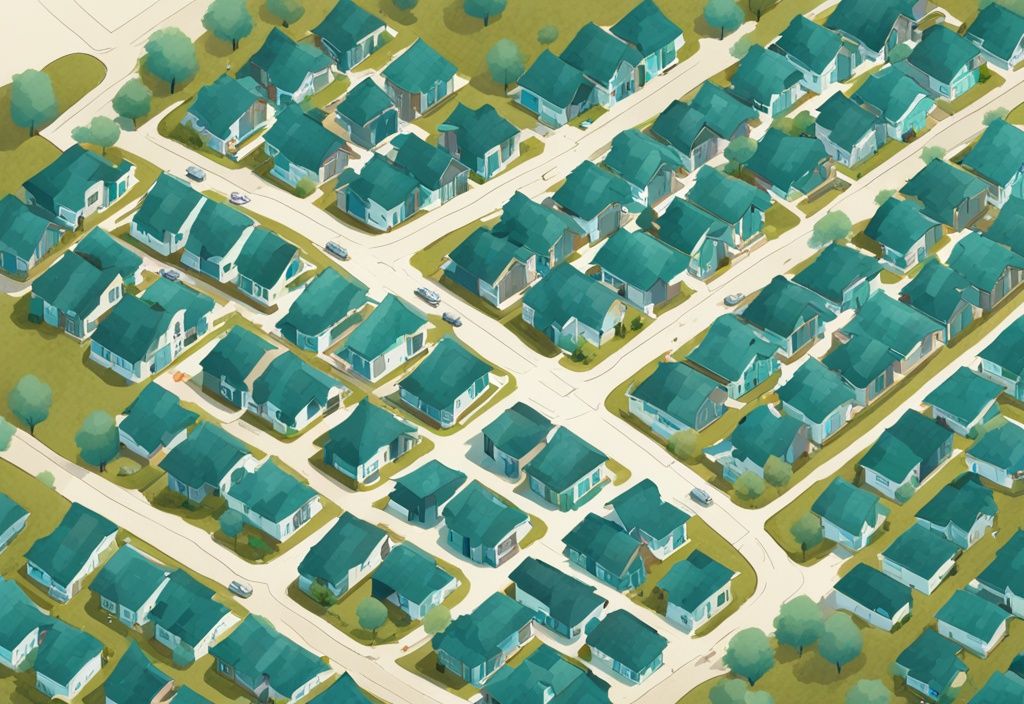
Navigating Legal and Regulatory Considerations
Understanding the intricacies involved in the legal and regulatory aspects of real estate can significantly impact your subdivision projects. Key areas such as local authority regulations, zoning laws, and the role of Homeowners Associations (HOA) play foundational roles in shaping what a subdivision is in real estate. These subheadings will delve into each of these critical areas.
Understanding Local Authority Regulations
Understanding what is a subdivision in real estate requires a clear grasp of local authority regulations. Local authorities are pivotal in governing the subdivision process, ensuring that developments align with land use, environmental protection, and planning regulations.
Developers need to adhere to guidelines set by city or regional planning commissions. This compliance is vital for maintaining orderly growth, protecting natural resources, and ensuring public safety and well-being. By engaging proactively with local authorities, developers can streamline their projects, meet all regulatory requirements, and avoid pitfalls that could delay their progress.
Zoning Laws and Their Impact on Subdivisions
Zoning laws are instrumental in shaping what is a subdivision in real estate, as they dictate the type of developments permitted on subdivided lands, which can be further explored at https://www.law.cornell.edu/wex/zoning. These laws dictate the type of developments permitted—whether residential, commercial, or industrial—on subdivided lands.
Knowing the classifications and restrictions that govern property use is crucial. Sometimes, changes to existing zoning laws necessitate applications for rezoning, which can significantly impact project timelines and viability. Hence, staying informed about current zoning laws and anticipating potential changes is important for developers to adjust their plans and ensure compliance.
Role of Homeowners Associations (HOA) and Covenants
When exploring what is a subdivision in real estate, considering the role of Homeowners Associations (HOAs) and covenants is essential. HOAs manage subdivisions by enforcing community rules and maintaining common areas, creating a structured and appealing community environment.
Additionally, Covenants, Conditions, and Restrictions (CC&Rs) outline specific guidelines for property use, appearance, and modifications within the subdivision. These covenants ensure consistent upkeep and uniformity, which enhances the overall appeal and property values of the subdivision. Understanding the implications of HOAs and covenants is crucial for both developers and prospective property buyers, fostering a harmonious living experience.
Expert Tips for Creating a Subdivision
Engaging with local authorities early in the subdivision process is crucial. This allows developers to gain a clear understanding of the regulatory landscape, ensuring compliance with local laws and avoiding unnecessary delays. By consulting with city planners and zoning boards, developers can gather insights into local zoning laws and planning regulations, which directly impact the feasibility and design of their projects. Strong relationships with regulatory bodies can also streamline the approval process, as authorities can provide guidance on requirements and potential hurdles from the outset.
Importance of Consulting Local Authorities
You know, diving into the world of real estate subdivisions without a map isn’t a good idea. Connecting with local authorities right from the start is like getting a treasure map. It’s essential because it helps you understand the regulatory landscape and ensures you’re playing by the rules, avoiding those dreaded delays.
Imagine having a chat with city planners and zoning boards. They can reveal all the secrets about local zoning laws and planning regulations that can make or break your project. Building strong relationships with these authorities can turn them into allies, guiding you through the requirements and potential roadblocks early on. This way, you can avoid surprises and keep your project on track.
Why Engage Professionals
Let’s face it: subdividing land isn’t a solo mission. The expertise of professionals like surveyors, real estate agents, and legal advisors is your golden ticket. Surveyors make sure every inch of your property is accurately mapped, while real estate agents offer market insights and strategies to boost your property’s value.
Legal advisors? They’re the unsung heroes, ensuring you’re on the right side of the law, preparing essential documents, and handling any legal hiccups. Think of them as your peace of mind package, helping you avoid costly mistakes and legal disputes. By bringing these pros on board, your project not only runs smoother but also adheres to required standards, making your subdivision journey less bumpy.
The Role of Cost Analysis in Financial Decision-making
Ever tried going on a long trip without budgeting? Not a good idea, right? The same goes for creating a subdivision. Conducting a thorough cost analysis is your financial roadmap, covering everything from land acquisition to legal fees and infrastructure development.
It’s like having a crystal ball for potential risks and their financial impacts. This detailed scrutiny helps you make informed decisions and ensures your project is financially rock-solid. Accurate financial planning also makes lenders more likely to back your project because it’s well-documented and feasible.
And let’s not forget, a comprehensive cost analysis helps prepare for unexpected twists and turns, ensuring your project remains financially healthy. With these insights in your toolkit, you’re better positioned to navigate the financial landscape of your subdivision with confidence.
By leveraging these expert tips, you can simplify the complex process of creating subdivisions, optimizing the potential of your real estate projects.
Subdivisions Compared to Other Real Estate Concepts
When diving into real estate, it’s essential to understand the various terms thrown around. Let’s break down subdivisions and how they compare to other real estate concepts like neighborhoods and suburbs.
Subdivisions vs. Neighborhoods
Subdivisions are specifically defined plots of land divided from a larger parcel, each governed by specific regulations. These regulations ensure a cohesive development plan concerning design, zoning, and use. Picture subdivisions as little communities within a larger area. Because of these set rules, you’ll often find that houses in a subdivision share a similar architectural style and may offer common amenities, thanks to Homeowners Associations (HOAs).
The beauty of these regulations is that they help maximize land use efficiency, maintain property values, and foster a structured community environment. Imagine living in a place where you know what to expect from your surroundings—it’s reassuring and stable.
On the flip side, neighborhoods are broader areas that usually encompass multiple subdivisions. They offer a more eclectic mix of amenities and property types. While subdivision rules might influence some parts of a neighborhood, the neighborhood itself can display a delightful variety of housing styles, ages, and types. Think of neighborhoods as a melting pot of history, culture, and social significance, each bringing its unique flavor to the table.
Subdivisions vs. Suburbs
Suburbs are those charming residential areas hugging the outskirts of cities. They strike a balance between the vibrancy of urban living and the tranquility of rural life. Within a suburb, you’ll often find multiple subdivisions, each independently planned and regulated. Suburbs typically boast a lower population density than bustling city centers, offering more green spaces and a variety of residential properties like single-family homes, townhouses, and condos.

But here’s the kicker: not all parts of a suburb are planned as subdivisions. Many suburbs grow organically over time, resulting in a delightful mix of property regulations and property types. Different zoning laws, market demands, and community planning initiatives shape this evolution. So, while subdivisions in suburbs might offer uniformity and well-planned amenities, the suburb itself offers a diverse living experience—like a well-mixed salad of developments and lifestyles.
Through these distinctions, it’s easier to grasp what a subdivision in real estate really means and how it fits within the broader contexts of neighborhoods and suburbs. Subdivisions provide organized and regulated land parcels tailored to specific community needs. Meanwhile, neighborhoods and suburbs offer more diverse living environments that include and extend beyond individual subdivisions.
Wrapping Up: Key Takeaways in Understanding Subdivisions in Real Estate
Subdividing land can significantly boost property value. The process entails dividing a large parcel into smaller, more manageable lots, which can be individually sold or developed. By doing so, property owners unlock the potential for increased profits as smaller lots often fetch higher per-unit prices compared to larger tracts of land. However, this process comes with its own set of challenges and risks.
To successfully navigate the world of subdivisions, it’s imperative to thoroughly understand and comply with all relevant regulatory frameworks. Local authorities impose specific zoning laws and planning requirements that dictate how land can be used and developed. Knowing these regulations inside and out will help ensure that your subdivision project meets all legal criteria and avoids unnecessary delays or legal issues.
Creating a subdivision also fosters community development and structural growth. It allows for the creation of organized and manageable parcels of land that can accommodate residential, commercial, or industrial structures. This, in turn, can lead to the development of communities with improved infrastructure, amenities, and a better quality of life for residents.
Before diving into a subdivision project, potential buyers or investors should carefully weigh the pros and cons. Considerations should include regulatory compliance, financial implications, and community impact. While the financial benefits can be substantial, the process requires meticulous planning and significant investment. Weighing these factors will help you make an informed decision, ultimately leading to the successful development of profitable and sustainable subdivisions.
Key Questions about Subdivisions in Real Estate
Subdividing property in real estate can be a fruitful venture, but it comes with its own set of complexities. Below, we explore what subdivisions involve, their benefits, challenges, and other crucial considerations.
What Exactly is a Subdivision in Real Estate?
A subdivision in real estate is like taking a big puzzle and breaking it into smaller, individual pieces. This process involves dividing a large piece of land into smaller plots or parcels that can be owned separately. These smaller plots can serve various purposes—residential, commercial, or industrial. Developers often subdivide land to align with local zoning laws while making the most out of the property’s value and utility.
What are the Benefits of Subdividing Property?
Subdividing property can open several doors for property owners. Imagine turning a huge block of land into smaller, more marketable lots; you can often sell these at higher per-unit prices. It’s a great way to boost profits.
- Firstly, smaller lots are generally easier to sell and can fetch better prices.
- Secondly, it diversifies your real estate portfolio, offering different types and sizes of lots that appeal to a wider range of buyers.
- Thirdly, it increases cash flow through the sale or lease of these smaller plots.
- Lastly, different market segments like single-family homes or commercial spaces can reduce your investment risk.
What are the Steps to Create a Subdivision?
Creating a subdivision isn’t as complicated as it might seem. Think of it like setting up a new neighborhood.
- Start with a feasibility assessment—check if the site is suitable, if there’s a market for it, and if it’s financially viable.
- Next, apply for zoning approval to make sure you’re complying with local land use requirements.
- A land survey by a licensed surveyor will define the exact boundaries of your property.
- Once you have the initial approvals, legally record the subdivision plan to formalize it in land records.
- Finally, develop infrastructure like roads, utilities, and drainage systems to prepare the site for future use.
What Challenges Can Be Faced When Subdividing?
While subdividing can be lucrative, it’s not without its hurdles. For example, unexpected costs can arise from changes in terrain or utility installations, leading to budget overruns. The approval process can be time-consuming and intricate, requiring various permits and compliance checks. Community objections related to environmental concerns, traffic increases, or changes in neighborhood character may also pose significant obstacles. Lastly, if the market demand isn’t sufficient, subdividing a large property can even devalue the remaining land.
What Impact Do Local Regulations Have on Subdivisions?
Local regulations are the backbone of any subdivision process. These laws cover aspects like land use, zoning, and environmental protection.
- They detail what types of developments are permissible and outline the planning requirements that need to be met.
- Following these regulations ensures your subdivision fits into broader city or regional planning goals.
- Bear in mind, any changes in zoning laws may require you to apply for rezoning, which can impact your project’s timeline and feasibility.
What is the Role of a Homeowners Association in a Subdivision?
Homeowners Associations (HOAs) are essential for keeping subdivisions well-organized and appealing. They enforce community rules, maintain common areas, and collect fees to keep shared amenities in tip-top shape. HOAs also oversee the Covenants, Conditions, and Restrictions (CC&Rs) which dictate property appearance, modifications, and usage within the subdivision. This ensures a cohesive and visually attractive community, ultimately boosting property values.
By understanding the ins and outs of subdivisions, you can make more informed decisions, whether you’re looking to invest, develop, or simply learn more about real estate.
Hi, I’m Alex Harper, a real estate expert with over ten years of experience in property management and legal advice. My passion is making the often complicated world of real estate understandable. I share practical tips and simple solutions to help you make better decisions – whether you’re buying a home, renting or just want to learn more about the industry. With my knowledge and experience, I want you to feel well-informed and confident in your real estate projects. Let’s tackle this together!
